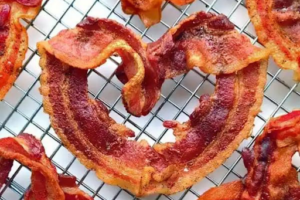Being a coffee lover, I’ve always been searching for the ideal cup of joe. I’ve discovered throughout the years that one very important component is the starting point for making great coffee the beans. Your coffee experience can go from ordinary to spectacular if you know what makes good coffee beans and how to keep them. In this article, I’ll guide you through the intricate world of coffee beans, exploring what makes them great, how to choose the best ones, and how to store them to maintain their quality. Let’s embark on the fragrant quest to find the best coffee beans and make sure they endure as long as possible.
What Makes Good Coffee Beans?
Origin and Variety
Finding quality coffee beans requires first knowing where they came from. Around the world, coffee is grown in a variety of locations, each of which gives the beans their distinct flavors and qualities. The most well-known areas for cultivating coffee are as follows:
- Ethiopia: Known as the coffee’s birthplace, Ethiopian beans have a rich flavor profile and are frequently flowery and delicious.
- Colombia: Coffee from this country has a medium body, lively acidity, and a well-balanced flavor. It’s renowned for having flavorful, nutty notes.
- Brazil: The country that produces the most coffee offers a range of beans, most of which have a strong body and are nutty and chocolaty in flavor.
- Jamaica: Known for its delicate flavor and absence of harshness, Jamaican Blue Mountain coffee is among the most costly and sought-after coffees worldwide.
Because of the soil, altitude, and climate in each of these areas, coffee beans have unique flavor profiles. It’s important to take origin into account when choosing coffee beans so that they complement your preferred flavor profile.
Bean Processing Methods
The way coffee beans are processed also plays a significant role in their flavor. There are three primary processing methods:
- Washed (Wet) Process: In this technique, the pulp from the cherry is removed before the beans are dried. Beans that have been cleaned typically taste brighter and cleaner.
- Natural (Dry) Process: The cherries’ flavor is more rich and sweeter since they are dried while the fruit is still attached to the bean.
- Honey Process: This hybrid technique strikes a balance between the natural sweetness of coffee and the clean flavors of washed coffee by partially removing the cherry’s pulp before drying.
Whether you like a bright, clear cup of coffee or a sweet, fruity one, knowing these processes will help you select beans that suit your tastes.
Roast Level
Another important element that affects the flavor and quality of coffee beans is roasting. There are three primary roast levels:
- Light Roast: Beans with a light roast maintain the majority of their natural characteristics, frequently exhibiting vibrant acidity and fruity overtones.
- Medium Roast: Medium roasts produce a well-rounded flavor profile by striking a balance between the roasting process and the natural characteristics of the bean.
- Dark Roast: Dark roast coffees have a strong, rich flavor that frequently has undertones of chocolate or smoke. The roasting process dominates the bean’s original flavors.
The brewing technique you choose and your taste preferences will determine the ideal roast level. For example, heavy roasts are good for espresso, whereas light roasts are perfect for pour-over coffee.
How to Choose the Best Coffee Beans

Freshness
Regarding coffee beans, freshness is critical. The aroma and aromas of freshly roasted beans are strong and can fade with time. To be sure you’re getting fresh beans, consider the following advice:
- Verify the Roast Date: Check the packaging for a roast date. After roasting, the beans should ideally be used within two to four weeks.
- Purchase Whole Beans: Compared to pre-ground coffee, whole beans keep their freshness longer. For optimal flavor, grind your coffee beans right before brewing.
- Invest in Small Amounts: Purchase smaller quantities of coffee beans that you can finish in a few weeks to guarantee you’re always sipping fresh coffee.
Sourcing and Ethical Considerations
Selecting high-quality coffee beans also requires taking their origins into account. Fair compensation and the use of sustainable farming methods are guaranteed by ethical sourcing procedures for coffee growers. Look for certifications such as:
- Fair Trade: Suggests that the coffee growers were fairly compensated for their crop.
- Organic: Guarantees that no artificial fertilizers or pesticides were used during the coffee’s growth.
- Rainforest Alliance: Promotes sustainable farming practices that protect the environment and improve farmers’ livelihoods.
Supporting ethically sourced coffee not only provides you with high-quality beans but also contributes to a better coffee industry.
Reviews and Tasting Notes
Selecting the best coffee beans might be aided by reading reviews and tasting comments. The characteristics of the coffee, such as fruity, nutty, or chocolaty, are described in the tasting notes. Reviews from other coffee lovers can shed light on the beans’ flavor and quality. Try experimenting with different beans to see which ones work best for you.
How Long Are Coffee Beans Good For?

Shelf Life of Coffee Beans
Coffee beans’ roast level, storage circumstances, and whether they are whole or ground all affect how long they will last on the shelf. Here’s a basic rule of thumb:
- Whole Beans: Whole coffee beans can last up to six months in good condition if stored correctly. After roasting, they will reach their optimum in terms of flavor and scent in two to four weeks.
- Ground Coffee: Because ground coffee is more exposed to air due to its larger surface area, it has a shorter shelf life than whole coffee beans. After grinding, ground coffee should ideally be us
Signs of Stale Coffee Beans
To prevent making an inferior cup of coffee, it’s critical to identify the telltale signs of stale coffee beans. Some signs that your beans are past their best are as follows:
- Dull Aroma: The aroma of fresh coffee beans is pronounced and pleasant. The beans are probably stale if they smell bland or have no particular flavor.
- Flavor: Coffee made from stale beans has a simple, uninteresting flavor. If your coffee tastes dull or has a papery or cardboard-like flavor, it’s time to replace your beans.
- Oily Surface: Over time, coffee beans release oils that can make the beans look shiny. While some oiliness is normal for dark roasts, an excessive amount can indicate that the beans are old.
Proper Storage for Coffee Beans
- Airtight containers: Coffee beans should be kept in sealed containers to ensure freshness. Since oxygen is the enemy of freshness, keeping the beans in an airtight container will reduce their exposure to the elements. Seek for containers with one-way valves, which let out carbon dioxide but keep air out.
- A cool, dark place: Coffee beans should be kept out of direct sunlight, heat sources, and moisture in a cool, dark environment. A cabinet or pantry is a perfect location. Coffee beans should not be kept in the freezer or refrigerator since the moisture will deteriorate the beans and change their flavor.
- Steer clear of frequent exposure: To lessen the amount of air that the beans are exposed to, try to open the container as little as possible. If you purchase coffee in bulk, you might want to split it up into smaller servings and keep them in different containers. In this manner, you can keep the remaining containers sealed while opening one at a time.
Brewing the Perfect Cup

-
Water Quality
Your coffee’s flavor can be greatly affected by the quality of the water you use. To avoid any undesirable flavors from tap water, use bottled or filtered water. For making coffee, water should be between 195°F and 205°F (90°C and 96°C).
-
Brewing Duration and Method
Various brewing processes and periods are needed for various brewing systems. Here are a few well-liked techniques:
- French Press: Slowly press down the plunger after steeping coarsely ground coffee in hot water for approximately four minutes.
- Pour-Over: Using a circular motion, pour hot water over medium-ground coffee, letting the water go through the coffee and filter.
- Espresso: For a rich, concentrated shot of coffee, use finely ground coffee and apply high pressure to drive hot water through the grounds.
Try a variety of brewing techniques to determine which one best suits your coffee’s flavor and your tastes.
Read Also:
How to Find the Perfect Coffee and Coffee Makers
Conclusion
It takes knowledge of the origin, roast levels, processing methods, and storage procedures to find and enjoy good coffee beans. You can make sure that every cup of coffee you brew is full-bodied, tasty, and gratifying by choosing fresh, premium beans and storing them properly. Don’t forget to try a variety of beans and brewing techniques to find your ideal cup of coffee. Cheers to your successful brewing!







